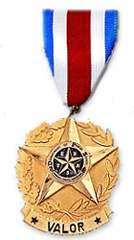Hall of Fame
The Hall of Fame includes portraits of the inductees into the Texas Rangers Hall of Fame, as well as tributes to famous Hall of Fame members such as Frank Hamer and Tom Hickman. The Hall of Fame also includes special temporary exhibits on historical topics, lifelike dioramas, and the Distinguished Service: Living Retired Rangers exhibit. These exhibits include:
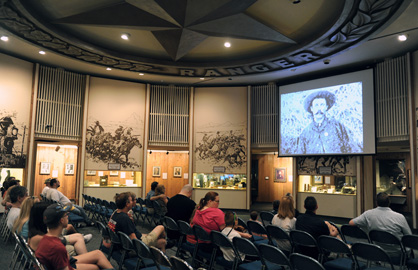
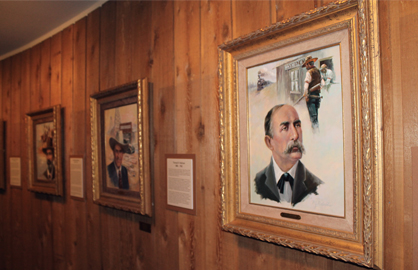
American Indian Rangers
A pervasive myth in Texas history is that Texas Rangers have always been Anglo white males. Since 1823 the Rangers have included Hispanics, African-Americans, and especially in the early years, American Indians. Tribes such as the Tonkawa and Lipan Apache aligned themselves with the Rangers, and the tribes and Rangers benefited from such an alliance. Each side needed assistance to fight the powerful Comanche Nation and their allies. American Indians enlisted as Rangers, Scouts, and Spies and greatly assisted the Rangers and settlers in many battles. Click here to learn more about Indian Texas Rangers.
Honoring the Legend: Hispanic Texas Rangers
The legacy of Hispanic Ranger service and the tradition of ethnic diversity dates back to the creation of the Texas Rangers in the 1820s. Tejanos served alongside Anglos and Indians in the Ranger force, and their particular frontier skills, tactics, and equipment proved invaluable to the Texas Rangers. The unique heritage of Tejanos has shaped the Texas Rangers as an organization, and Hispanic Rangers continue to make significant contributions to the evolution of the Ranger Service. Click here to learn more about Hispanic Texas Rangers.
Women and the Rangers: Mothers, Daughters, Sweethearts, Wives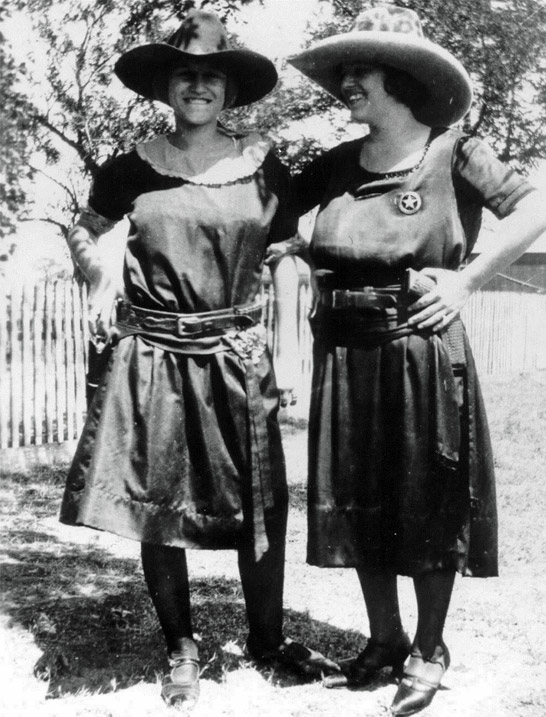
The words “Texas Ranger” do not typically call to mind the picture of a woman, yet women have played an important part in the history of the Rangers. In their various roles, women have supported and contributed to the success of the Texas Rangers. Women were also commissioned as Special Rangers in the 1920s – 1940s and since 1993 women serve in the active Ranger force.
Texas Rangers on the Home Front
Texas Rangers have protected the lives and homes of Texans for two-hundred years. While the frontiers of the West have changed, the importance of home life has not. Texas Rangers were not only lawmen but men whose families, including their mothers, wives, sisters, and sweethearts, created homes for them. As Ranger duties and equipment changed over the years, so did their homes. From a humble frontier homestead in the 1840s to a 21st Century home where the Ranger may well be the wife and mother in the home, their homes continue to be a place of family and an escape from the sometimes harsh and taxing life of a law enforcement officer.
Captivity Stories
Taking captives during a raid was a common practice during the frontier era. The encroachment of Texan settlers into native lands and ensuing warfare, as well as the spread of previously unknown diseases, decimated the Indian populations. During the Anglo settlement of Texas, it was not unusual for settler’s children to be taken captive by various nomadic tribes. Some were ransomed and returned to their biological families while others lived out their lives with what became their Indian families. Taking captives was not limited to American Indian tribes. The Texan government also participated in this activity. One example is in an 1843 letter from Sam Houston that discusses Indian captives held by the Texan government.
Firearms Engraving and Texas Engravers
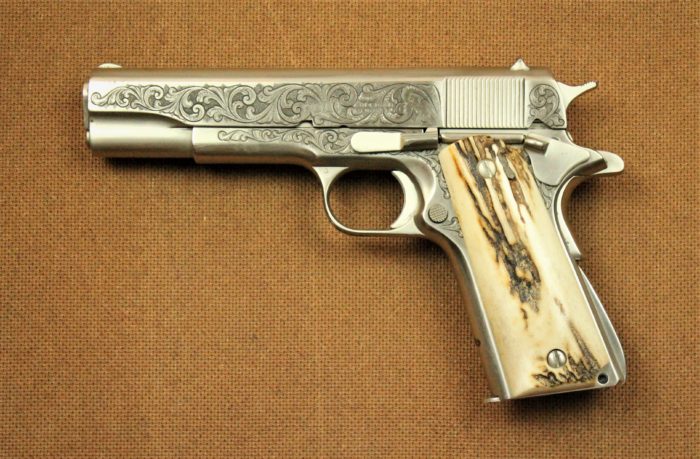
Firearms engraving is an art form that has been practiced for centuries, while styles and tools have changed over the years. Though many unknown engravers have made their mark on Texas Ranger firearms, the Texas Ranger Hall of Fame and Museum has several examples of firearms from master engravers, including Cecil Coe “Cole” Agee and Weldon Bledsoe. From intricate scrollwork on automatic pistols to the engraved scenes on the cylinders of Colt Dragoon revolvers and the gold and silver inlays on Kentucky long rifles, firearms engraving reveals the artistry of the engraver and the particular tastes of the owner.
Distinguished Service: Retired Texas Rangers
Texas Rangers come from different backgrounds, races, genders, and cultures. They serve throughout the state, investigating murder, corruption, drug trafficking, robbery, kidnapping, and theft. They are a symbol of Texas, known throughout the world. They are united by the badge. Meet the living retired Texas Rangers, men and women who dedicated their careers to the pursuit of law and order. For more information on living retired Texas Rangers, please visit http://www.texasrangerregister.org.
Texas Department of Public Safety's Medal of Valor
The Medal of Valor is the highest award presented by the Texas Department of Public Safety. It is awarded to officers who have displayed conspicuous gallantry, courage, and heroism at considerable risk to their own lives, and have gone far above and beyond the call of duty. Since 1983, the Medal of Valor has been awarded to four Texas Rangers - Sgt. William R. Gerth, Sgt. Stanley Keith Guffey, Sgt. John Aycock, and Sgt. Danny V. Rhea. You can learn more about these Medal of Valor recipients here.
